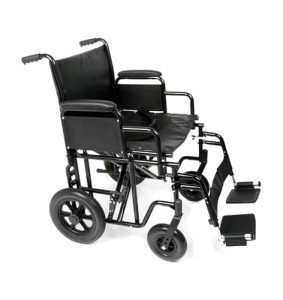How Do You Explain Lightweight Bariatric Transport Wheelchair To A Five-Year-Old

Bariatric Transport Wheelchair
Developed to be pressed by caregivers, transport chairs feature smaller front wheels and bigger rear wheels. They are a popular option for users with limited mobility who can not stroll individually.
When shopping for a lightweight bariatric transport wheelchair, consider the user's needs and how they'll use the chair. Likewise, measure any doorways and other areas the chair will travel through.
Seating

Bariatric transport chairs include a large 22 to 36 inch wide seating area that accommodates extra-large users. The chair seat is made from breathable nylon and includes padded arms that can be gotten rid of and swing-away footrests. Unlike basic wheelchairs, which are ideal for average body weights, bariatric chairs have heavier frames built from enhanced products and larger rear wheels that make it easier to push them. Talk with a mobility expert for more information about your options and to figure out which type of wheelchair is ideal for you. Bariatric wheelchairs are frequently covered by insurance companies like Medi-Cal if your medical condition meets their coverage requirements.
Frame
Bariatric transport wheelchairs use heavy-duty frames made from reinforced products like steel and have broader seats than basic wheelchairs. bariatric wheel chair are developed for people with greater body weights and can hold a maximum weight capacity of 700 pounds. They likewise have bigger rear wheels, which make them simpler for caregivers to press. Bariatric wheelchairs are often covered by insurance such as Medi-Cal, depending upon the client's particular medical needs and medical diagnosis. Ask a health care expert or mobility expert to help choose the ideal chair for your unique requirements.
Click on this link for more information. Medline Bariatric Transport Chair. Deep Red Hammertone Frame.
bariatric wheel chair
While basic wheelchairs have lighter frames and smaller wheels, bariatric transport chairs feature heavier-duty products and a wider seat to accommodate users who weigh more than average. Due to the fact that of their specialized style and building and construction, they tend to cost more than standard chairs. However, some insurance coverage programs like Medicare and Medi-Cal might cover the expense of these chairs if the user meets the requirements for coverage. To read more about which chair is right for you, get in touch with a rehabilitation professional today.
Wheels
Bariatric transport wheelchairs have larger rear wheels than standard models, making them simpler to push. They're typically utilized in medical facilities and home settings, where the chair is pressed by caregivers. The extra-large rear wheels likewise allow the chairs to navigate a range of terrain, including outdoors.
Basic wheelchairs usually have smaller wheels, that make them more maneuverable inside your home but less ideal for daily use on outside streets and other surfaces. Mobility experts suggest talking to a healthcare supplier or mobility professional to choose the very best wheelchair for your specific requirements and goals.
This durable, nylon strengthened steel transport chair supports clients as much as 500 pounds and features a spacious 22" seat, cushioned desk-length armrests, swing-away footrests and hand brakes. The 12-inch rear wheels make sure a smooth trip in any environment.
